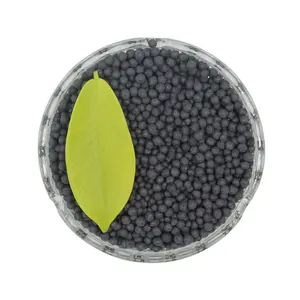A slow release fertilizer for trees is a specialized plant nutrient product designed to provide a consistent supply of nutrients over an extended period. This type of fertilizer is tailored to the needs of trees, which require a steady and prolonged uptake of nutrients to support their growth and health. The slow release fertilizer trees category encompasses a variety of formulations that cater to different types of trees, including fruit trees, evergreens, and ornamentals.
Types and Characteristics of Slow Release Fertilizers
The slow release fertilizer trees market offers a diverse range of products, each with unique characteristics to suit various tree types and growth conditions. For palms, slow release palm fertilizer is formulated to prevent the yellowing of leaves and to promote healthy frond growth. Similarly, slow release citrus fertilizer is enriched with micronutrients like iron and manganese, crucial for the prevention of deficiencies common in citrus varieties. Products like osmocote citrus are engineered to release nutrients in sync with the growth cycle of citrus trees, maximizing nutrient uptake efficiency. For ornamental trees and shrubs, slow release shrub and tree fertilizer is balanced to support lush foliage and vibrant blooms. Each product under this category is designed to release nutrients over a specific time frame, typically ranging from three months to up to nine months, which aligns with the growing seasons and nutrient requirements of different tree species.
Structure and Operation of Slow Release Fertilizers
The structure of slow release fertilizers is a marvel of agricultural science, designed to mimic the natural nutrient uptake of trees. These fertilizers are typically made up of granules or prills, each coated with a semi-permeable membrane or a resin that controls the rate at which the nutrients are released. The operation of these fertilizers is a complex interplay between the coating material, soil temperature, moisture, and microbial activity in the soil. As the temperature increases, the coating expands slightly, allowing more nutrients to pass through. Similarly, as soil microbes become more active, they gradually break down the coating, releasing the nutrients contained within. This slow and steady release mechanism ensures that trees have access to nutrients throughout their growth cycle, without the peaks and troughs associated with water-soluble fertilizers.
Materials and Properties
The materials used in the production of slow release fertilizers are selected for their durability and nutrient retention properties. Organic materials such as natural resins, lignins, and sulfur-coated urea are common, as they break down slowly over time under the influence of soil microbes and weather conditions. Inorganic materials, such as polymer-coated nitrogen, are chosen for their ability to control the release of nutrients in response to soil temperature changes. These materials are not only effective in delivering nutrients over an extended period but are also environmentally friendly, as they minimize nutrient runoff and leaching, thereby reducing the impact on surrounding ecosystems.
Business Usages and Applications
Slow release fertilizers have found widespread use in various sectors, including commercial agriculture, urban landscaping, and home gardening. In commercial orchards, slow release fertilizer for fruit trees is crucial for ensuring a consistent and bountiful harvest. Landscapers rely on slow release tree and shrub fertilizer to maintain public parks and green spaces, ensuring that trees remain healthy and attractive throughout the seasons. These fertilizers are also used on golf courses, in forestry, and in nursery operations, where the health of the tree is paramount to the success of the business. The controlled nutrient release not only improves plant vigor but also reduces the need for frequent fertilizer applications, thereby saving on labor and material costs.
Functions of Slow Release Fertilizers
The primary function of slow release fertilizers is to provide a consistent supply of nutrients to trees, which is essential for their growth and development. These fertilizers support a range of functions in trees, from root development, which is crucial for water and nutrient uptake, to the production of chlorophyll, which is necessary for photosynthesis. Additionally, they aid in the development of strong and healthy branches and leaves, and in the case of fruit trees, contribute to the production of high-quality fruit. The slow release of nutrients also means that trees are less likely to suffer from nutrient burn, a common problem with fast-release fertilizers, which can damage roots and reduce plant vigor.
Features of Slow Release Fertilizers
One of the most notable features of slow release fertilizers is their nutrient release mechanism, which is temperature-coordinated to ensure that nutrients are available during the optimal growing times. Additionally, these fertilizers often feature a low salt index, which reduces the risk of salt buildup in the soil that can be harmful to tree roots. The granular form of these fertilizers also allows for easy application and even distribution in the soil. Furthermore, many slow release fertilizers are now incorporating organic materials, which not only provide nutrients but also contribute to soil health by improving soil structure and promoting microbial activity.
Benefits of Slow Release Fertilizers
The use of slow release fertilizers offers numerous benefits, including improved nutrient use efficiency, which leads to cost savings and environmental benefits. Trees fertilized with these products exhibit improved growth rates, greater resistance to pests and diseases, and, in the case of fruit trees, better fruit quality and yield. For the end-user, this means healthier trees with less maintenance, fewer applications of fertilizer, and a reduced environmental footprint due to decreased nutrient runoff.
How does slow release fertilizer work?
Slow release fertilizer works by encapsulating the nutrients within a substance that degrades over time or by using a chemical structure that requires a longer period to break down in the soil. This controlled release mechanism ensures that the nutrients are not washed away by rain or irrigation and are available for the roots to absorb over a longer period, which is particularly beneficial for the sustained growth of trees.
What are the best practices for storing and handling slow release fertilizers?
To maintain the efficacy of slow release palm tree fertilizer and similar products, it is crucial to store them in a cool, dry place away from direct sunlight. Proper handling also includes wearing gloves and a mask to avoid direct contact or inhalation of dust particles. Always seal the packaging after use to prevent moisture from affecting the quality of the fertilizer.
Are there specific slow release fertilizers for different types of trees?
Yes, there are specific slow release fertilizers tailored for different tree types. For instance, slow release palm fertiliser is formulated with a unique nutrient ratio to support palm growth, while slow release fertilizer for evergreens caters to the needs of coniferous trees. It is important to select the appropriate type of fertilizer to ensure that the trees receive the right balance of nutrients.









































 浙公网安备 33010002000092号
浙公网安备 33010002000092号 浙B2-20120091-4
浙B2-20120091-4